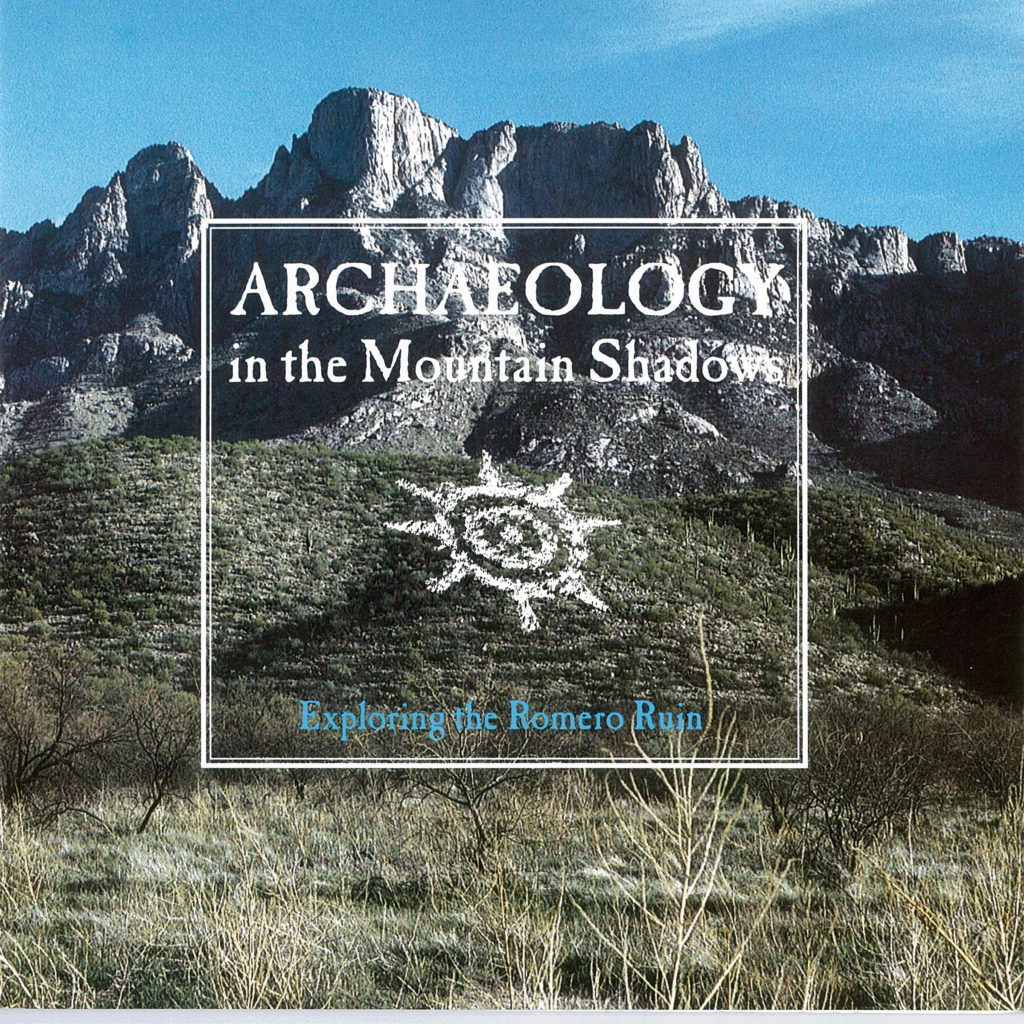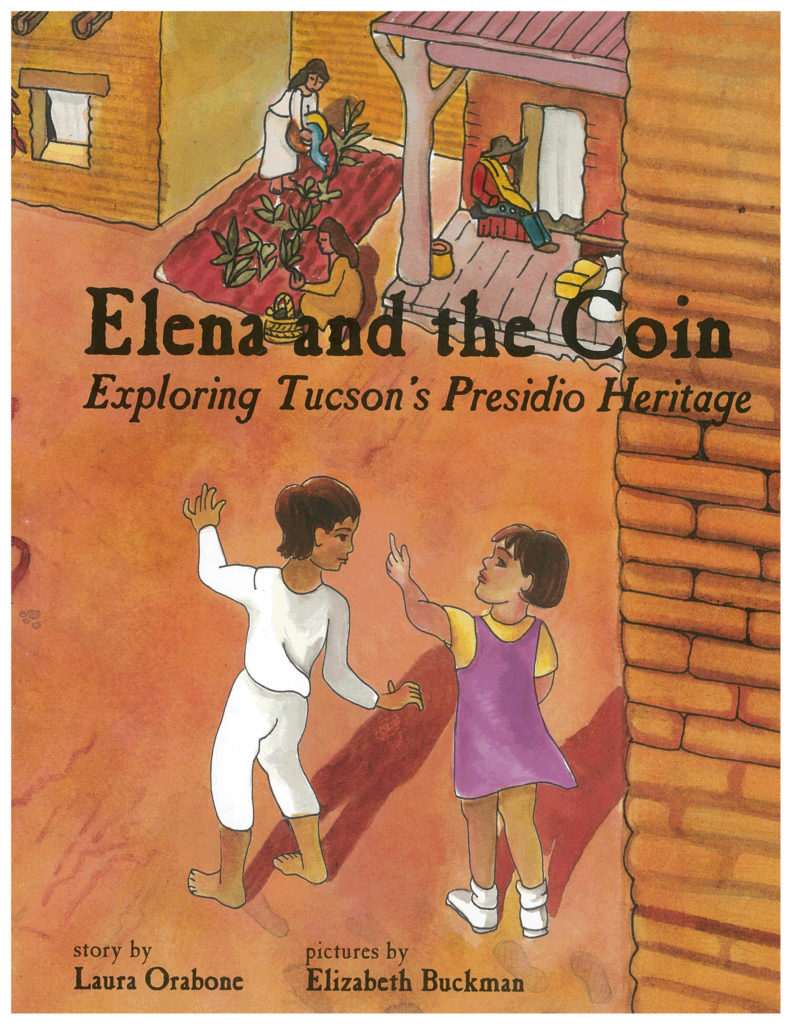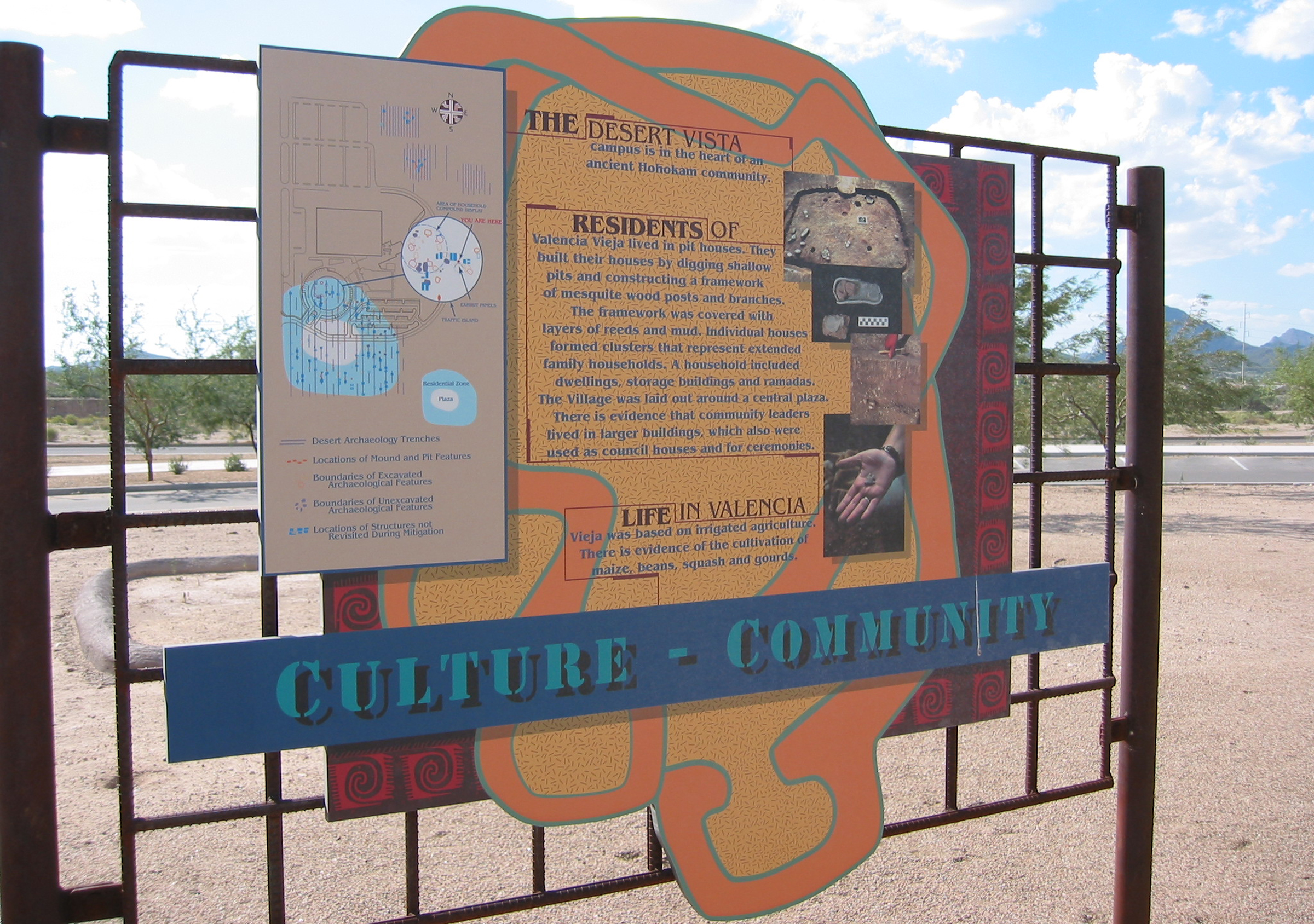
Desert Archaeology Public Outreach: Bringing the Past to the Present
Project director and historical archaeologist Homer Thiel showcases the variety of public outreach products created by Desert Archaeology.
After the excavations are finished, the artifacts analyzed, and the reports written, what else is left to do? For Desert Archaeology staff members, sharing the results of their work with the public is an important goal. Because the public is interested in and enthusiastic about archaeology, this goal is equally important for our clients who want to publicize their investment in the past to customers or voters. We accomplish this public outreach by developing signage, creating exhibits, authoring books and magazine articles, and giving public talks.
Signage
Signs created by Desert Archaeology staff can be found in several places in Tucson. Work conducted at the prehistoric Julian Wash site in the late 1990s is summarized in signage at a paved trail running through the Julian Wash Archaeological Park at 2820 South 12th Avenue.
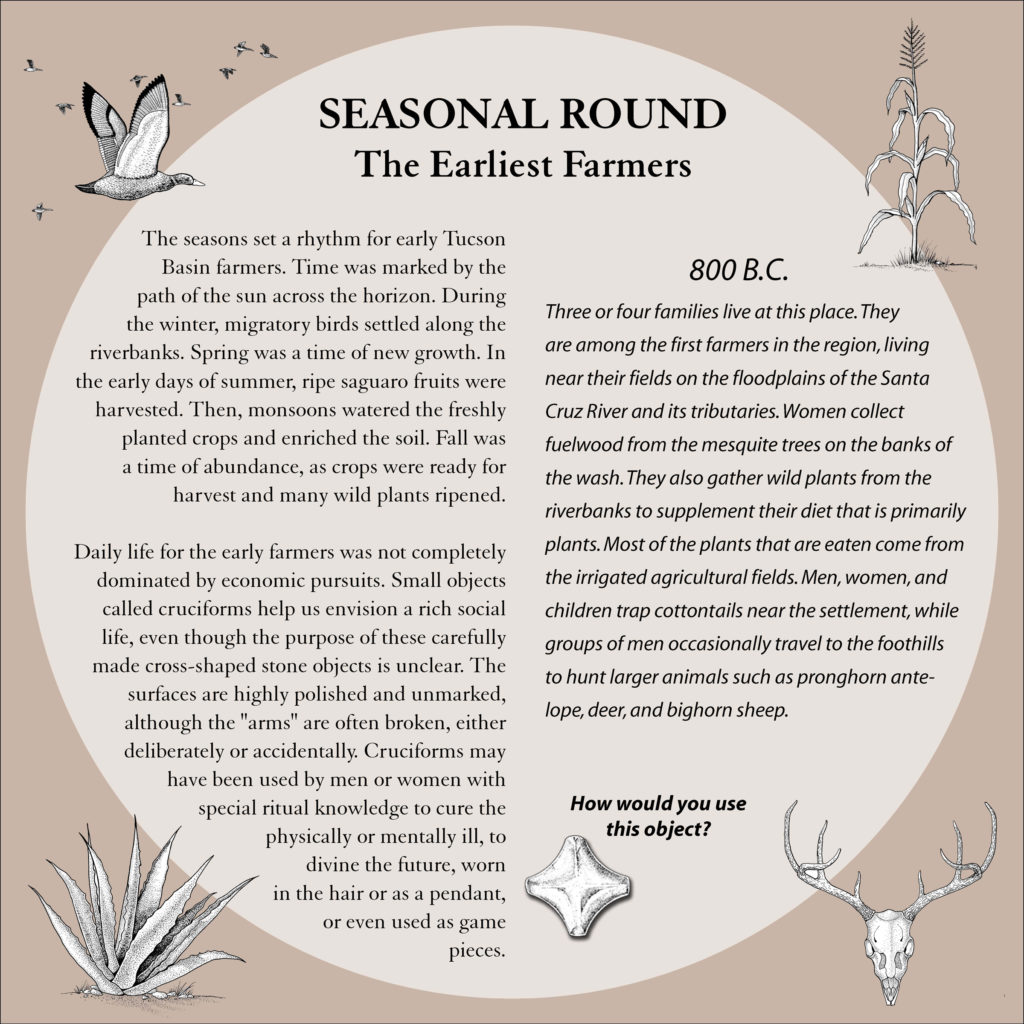
Desert Archaeology Operations Manager Trish Castalia, artist Rob Ciaccio, Project Director Deborah Swartz, and Publications Director Emilee Mead created this sign to explain Early Agricultural period lifeways to visitors to the Julian Wash Archaeological Park.
Another two signs were created for the Paseo de Las Iglesias trail, located on the west side of the Santa Cruz River south of West Silverlake Road. One focuses on the prehistoric site found there, while the other examines the historic period use of the area, which included a grain mill, a resort, and a brewery.

This sign, created for the Paseo de las Iglesias trail, incorporates text written by project director Michael Lindeman alongside Catherine Gilman’s maps, Henry Wallace’s aerial photos, and an illustration by Rob Ciaccio.
Tucson’s Sun Link streetcar’s 3.9-mile-long route includes 17 stops. Desert Archaeology worked with the City of Tucson’s Historic Preservation Office to provide text and illustrations for signs describing the historic significance of the area around each of the stops.
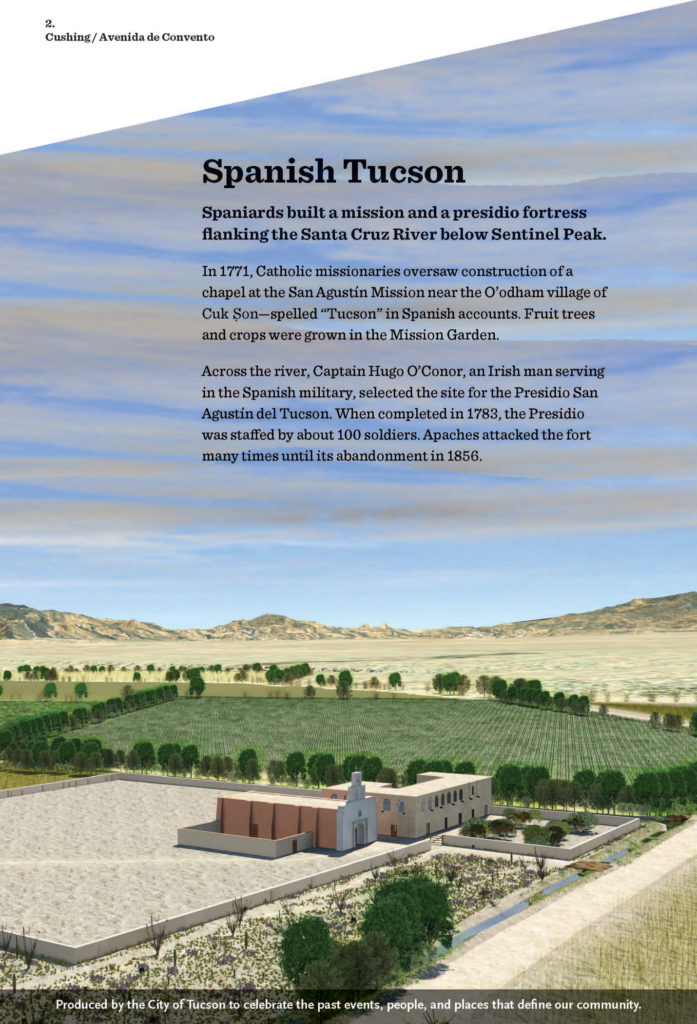
Desert’s Homer Thiel and Trish Castalia collaborated with outside consultants to produce several signs highlighting Tucson history for Sun Link streetcar stops throughout downtown, 4th Avenue, and the University district. This one can be found at the Cushing/Avenida de Convento stop west of downtown.
Exhibits
Artifact exhibits are some of the most popular and effective public outreach products we provide. Seeing ancient and historic physical objects up close gives people a tangible connection to the past—an experience that usually happens in museum settings, but can be created in any public space.
Desert Archaeology has helped create several exhibits at the Arizona Historical Society’s Arizona History Museum, located at 949 East 2nd Street in Tucson. The Rio Viejo, Rio Nuevo exhibit tells the story of the Santa Cruz River and the findings made during excavations at the prehistoric Clearwater site, the Mission of San Agustín, the Presidio San Agustín del Tucson, and the Tucson Pressed Brick Company. A highlight is a recreated well with artifacts discarded by Chinese gardeners in the 1890s.
Another exhibit, at the Evo A. Deconcini United States Courthouse, 405 West Congress Street, includes signage and a display of courthouse-related artifacts, including a stuffed bald eagle and Prohibition-era liquor bottles. The display can be visited on the second floor of the building during regular weekday business hours.

The signs for the courthouse exhibit were designed by Publications Manager Emilee Mead. The text for this one, framing immigration issues through the experience of 19th-century Chinese immigrants, was developed by historic archaeologist Homer Thiel.
A smaller exhibit can be found at the Presidio San Agustín del Tucson, 196 North Court Avenue, where a display case contains artifacts dating from the Early Agricultural Period to the American Territorial Period, found during excavations that preceded the creation of the reconstructed corner of the old Spanish fort. A 2,000-year-old pit structure was also stabilized and can be viewed at the park.
The AC Marriott Hotel currently under construction in downtown Tucson plans to host a permanent lobby exhibit featuring artifacts recovered during Desert Archaeology’s excavations on the property. This kind of public outreach requires little space and is a constant visual reminder to customers that some interesting history lay beneath the current building—and that the business owners made the effort to preserve it for people to enjoy into the future.
Books
Desert Archaeology staff write a variety of reports as part of our contract requirements. These reports are filled with technical language and number-filled tables. Other archaeologists love to read them, but members of the general public probably find them less interesting. In order to reach a wider audience, we produce books on a variety of topics. This includes specifically contracted public outreach volumes along with general-interest books that are related to our research.
Work within Catalina State Park resulted in Archaeology in the Mountain Shadows: Exploring the Romero Ruin (1996), by project director Deborah Swartz. This small book describes the history and archaeology of the Romero Site, which can be visited at the park.
A 1999 excavation in the City Hall lawn uncovered one of the Presidio San Agustín del Tucson walls. The discovery inspired a children’s book, Elena and the Coin: Exploring Tucson’s Presidio Heritage (2000) written by then-publications assistant Laura Orabone, with paintings by Elizabeth Buckman. The book tells the story of a young girl who visits an archaeological dig and goes back in time to the Mexican fortress.
Work in Phoenix around Sky Harbor Airport led to the publication of Seeds of Growth: Neighborhoods on the Salt River Floodplain (2013), prepared by Desert Archaeology staff and Pat Stein of Arizona Preservation Consultants. The book highlights the lives and accomplishments of some of the people who lived in the area around the airport.
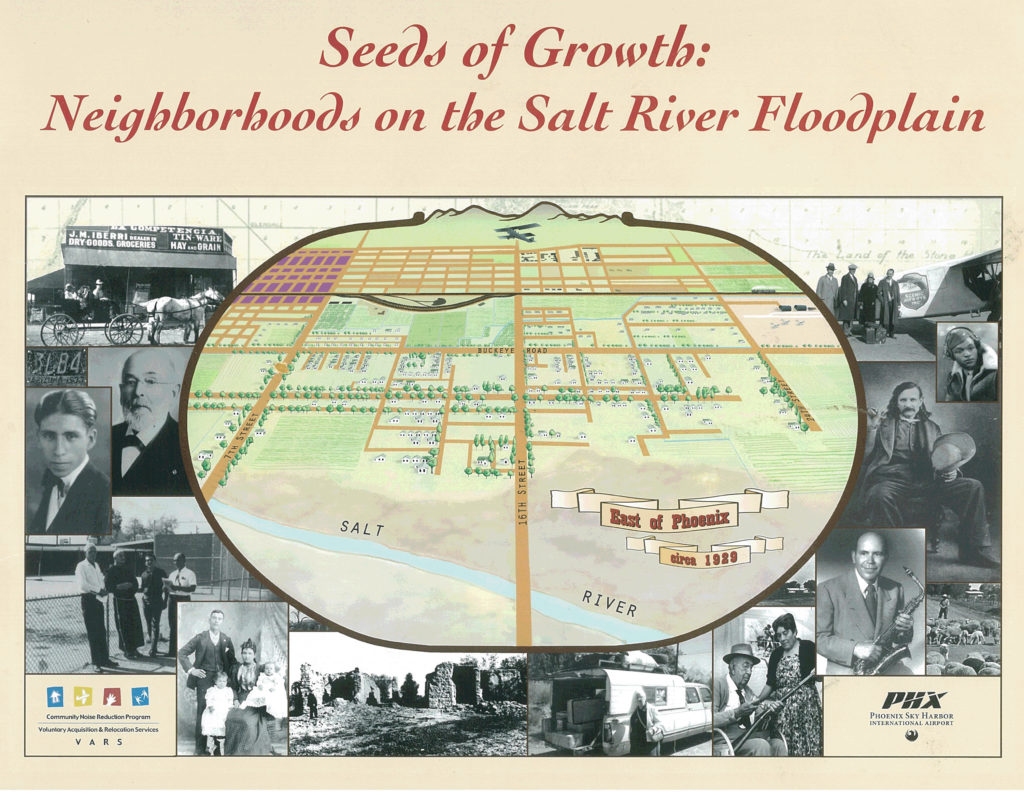
This booklet was a collaborative effort among Desert Archaeology staff (Operations Manager Trish Castalia, project directors Kathy Henderson and Homer Thiel, Publications Director Emilee Mead, artist Rob Ciaccio), neighborhood associations, and outside consultants.
 Two stone artifact guides written by Desert Archaeology specialists split the difference between technical data reporting and general-interest books. These books are not only used by professional archaeologists but are enjoyed by people who volunteer as museum docents and site stewards, or who simply have an interest in these types of artifacts. Ground Stone Analysis: A Technological Approach, by Jenny Adams, presents the entire range of ground stone artifacts you might expect to see in the Southwest. Projectile Points of the Early Agricultural Southwest, by Jane Sliva, focuses on the stone spear and dart tips made by the first farmers in central and southern Arizona, as well as northern Sonora, Mexico. Both books are full of illustrations and maps that make the content accessible to a wide audience.
Two stone artifact guides written by Desert Archaeology specialists split the difference between technical data reporting and general-interest books. These books are not only used by professional archaeologists but are enjoyed by people who volunteer as museum docents and site stewards, or who simply have an interest in these types of artifacts. Ground Stone Analysis: A Technological Approach, by Jenny Adams, presents the entire range of ground stone artifacts you might expect to see in the Southwest. Projectile Points of the Early Agricultural Southwest, by Jane Sliva, focuses on the stone spear and dart tips made by the first farmers in central and southern Arizona, as well as northern Sonora, Mexico. Both books are full of illustrations and maps that make the content accessible to a wide audience.
Magazines
A forthcoming issue of American Ancestors magazine, published by the New England Genealogical Historical Society, will feature an article by Homer Thiel, “Using Archaeology to Illuminate a Mexican-American Family History.” This article tells the story of the León family, who farmed along the Santa Cruz River during the early 1800s.
Desert Archaeology projects have been featured in other popular magazines, including Archaeology, American Archaeology, Arizona Highways (here and here), and Smithsonian, as well as appearing frequently in local newspapers.
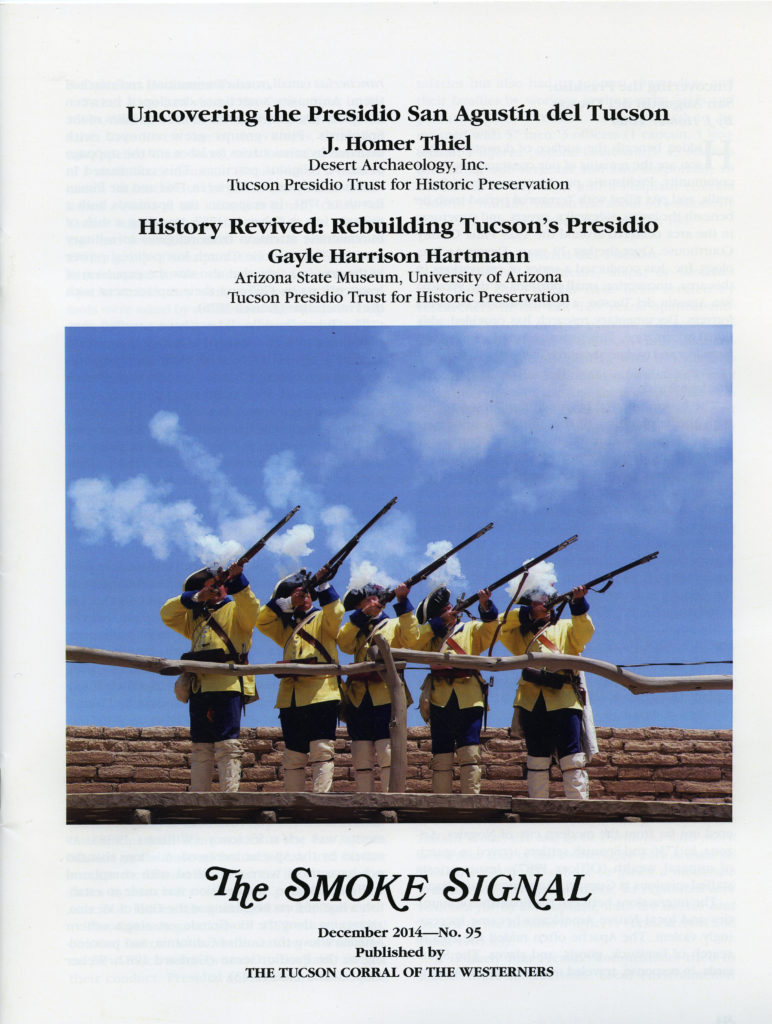
Desert Archaeology project director Homer Thiel is a frequent contributor to historical and genealogy society newsletters and magazines.
Public talks
Staff members frequently give public outreach presentations about our company’s work and the specialized individual research projects that have grown from it. We announce these via Facebook and Twitter. Some of our talks have been recorded and are available online, including the presentations below by Homer Thiel, Bill Doelle, Sarah Herr, and Henry Wallace.
Why do we do this?
Tucsonans—and tourists visiting the city—are intensely interested in our community’s heritage, evidenced by the numbers of people who throng to local museums, historical sites, and special events connected to in-progress archaeological projects. Open houses at Desert Archaeology excavations have drawn thousands of visitors. Last summer, over 4,000 people toured a prehistoric site excavated by SWCA, Inc., at Sunset Road where 2,000+-year-old footprints had been found.
Many of Desert Archaeology’s projects are government-funded work ultimately paid for by taxpayers. Bringing our results to the public returns the investment made on archaeological fieldwork, as it informs our fellow citizens about the rich history of southern Arizona and cultivates both interest and a pride of place. Together, these encourage people to continue visiting, preserving, and promoting these invaluable cultural resources.



